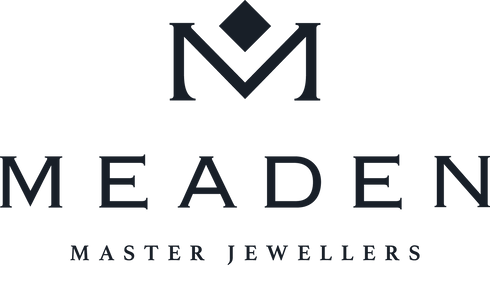As the saying goes, "diamonds are forever," but did you know that their everlasting beauty lies not only in their rarity but also in their exquisite cuts? A diamond's cut is not just a technical attribute; it is the very essence that transforms a rough stone into a cherished masterpiece.
If you’ve got your eye on a special piece of diamond jewellery and want to understand more about diamond cuts, then this guide is for you. Join us as we delve into the fascinating world of precision, craftsmanship, and the undeniable magic that occurs when light dances through a perfectly cut diamond. Whether you're a seasoned connoisseur or a first-time buyer, our exploration promises to illuminate the path to selecting a dazzling gem that not only captures the eye but also the heart.
What is a Diamond Cut?
First up let’s get the basics covered. In the realm of diamonds, the term "cut" refers to how well a diamond has been shaped and faceted to interact with light. The precision and craftsmanship of the cut significantly impact a diamond's brilliance and sparkle. A well-cut diamond reflects light internally, creating a dazzling play of colours and enhancing its overall appearance.
Diamond Cuts vs Diamond Shapes: Understanding the Difference
When it comes to choosing your perfect diamond it's crucial to decipher the distinction between a diamond's cut and its shape. While the layperson might use these terms interchangeably, within the intricate world of gemology, they hold distinct meanings that profoundly impact the visual allure of the gem.
The "cut" of a diamond delves into the craftsmanship involved in shaping and faceting the stone, governing its interaction with light and, consequently, its overall brilliance.
Conversely, the "shape" of a diamond refers to its physical form – the outline that catches the eye and defines its appearance. The choice of shape is based on personal aesthetic preference, ranging from the classic round brilliant to the regal emerald cut or the romantic heart shape.
Understanding Diamond Cut Types
Now that we’ve established the difference between “cut” and “shape” it’s time to dig a bit deeper into the types of diamond cuts. Diamond cuts are graded on a system spanning from excellent to poor. This grade assesses brilliance, symmetry, polish, and fire, directly influencing the gem's sparkle.
Excellent Cut Diamond
An excellent-cut diamond exemplifies superior craftsmanship, blending impeccable proportions for optimal brilliance. This ideal cut proficiently reflects light, creating a captivating sparkle that defines its magnificence.
Very Good Cut Diamond
A very good-cut diamond is also a great choice and offers an impressive display of light reflection. Though not as perfect as the excellent cut, it captures substantial light, presenting a radiant appearance at a more moderate price.
Good Cut Diamond
A good-cut diamond is still regarded as an acceptable standard and it’s hard to decipher the difference between a good cut and a very good cut with the naked eye. While it may not match the standard of excellent cut, it provides an economical choice, balancing aesthetics and budget.
Fair Cut Diamond
A fair-cut diamond reflects a modest light portion, ideal for those who want to prioritise carat weight. A fair cut diamond offers size but expect a compromise on the diamond’s sparkle and brilliance.
Poor Cut Diamond
Last, and in this case least, a poor-cut diamond, with deviating cutting depths, sacrifices some sparkle. Its advantage lies in affordability, making it a budget-conscious choice despite lacking the brilliance found in higher grades.
Understanding Diamond Shape Types
As we alluded to above, diamond shapes refer to the distinctive physical configurations of diamonds, showcasing the diverse and artistic ways these precious gems are cut. The shape of a diamond goes beyond its structural outline, encompassing the arrangement and alignment of its facets, which play an important role in determining the stone's overall aesthetic appeal. From the timeless elegance of the round brilliant cut to the modern facets of the princess cut, each diamond shape encapsulates a unique personality and style.
Round Brilliant: The classic round brilliant cut is renowned for its timeless elegance. Its 58 facets maximize brightness and sparkle, making it an ideal choice for jewellery like engagement rings and stud earrings like our exquisite Ivy Diamond Stud Earrings
Cushion Cut: This square or rectangular cut with rounded corners exudes vintage charm. A cushion-cut diamond complements halo settings and vintage-inspired jewellery with its romantic allure. For a practical example, check out our stunning Ava Cushion Cut Cognac Diamond Halo Ring.
Pear Cut: Resembling a teardrop, the pear cut is a perfect blend of elegance and uniqueness. It adds a touch of sophistication to pendants and drop earrings, showcasing its versatility. This cut also works brilliantly with necklaces as exemplified with our majestic Audrey Pear Diamond Necklace.
Princess Cut: A square cut with sharp corners, the princess cut is renowned for its modern and glamorous appeal. It pairs exceptionally well with both solitaire rings and contemporary designs.
Heart Cut: Symbolising love and romance, the heart cut is a distinctive choice for expressing deep emotions. It shines brilliantly in pendants and statement rings, capturing attention with its captivating shape.
Emerald Cut: Characterised by its rectangular shape and cut corners, the emerald cut exudes a sophisticated and refined aura. It beautifully complements vintage-inspired engagement rings and certain styles of wedding rings.
Oval Cut: The oval cut combines the brilliance of a round cut with the elongated shape, creating a flattering and timeless appearance. Oval-cut diamonds are a popular choice for engagement rings like our must-have Quinn Oval Diamond Solitaire.
Marquise Cut: Featuring pointed ends and an elongated shape, the marquise cut adds a touch of drama and elegance. It is a stunning choice for engagement rings, enhancing the finger's appearance with its elongating effect.
Radiant Cut: A square or rectangular cut with trimmed corners, the radiant cut offers a perfect blend of brilliance and modern aesthetics. It pairs well with various settings, bringing a contemporary edge to diamond jewellery.
Asscher Cut: Similar to an emerald cut but square, the asscher cut showcases a mesmerising play of light. It complements vintage and art deco designs, making a bold statement in engagement rings and earrings.
How Diamond Cuts are Graded
The Gemological Institute of America (GIA) employs a comprehensive grading system to assess the quality of diamond cuts. As mentioned earlier, this system considers seven essential elements, with the overall grading determined by the lowest score among five of these factors. Let's explore these elements in a bit more detail:
Symmetry: Symmetry refers to how well the diamond's facets align and interact with each other. Excellent symmetry ensures a harmonious and balanced appearance.
Polish: The polish of a diamond relates to the smoothness and quality of its surface. A high-quality polish enhances the diamond's brilliance and overall visual appeal.
Brightness: Brightness measures the intensity of white light reflected from a diamond. Excellent brightness results in a dazzling and radiant display of light.
Weight Ratio: Weight ratio, also known as the depth percentage, indicates the relationship between a diamond's depth and its diameter. An optimal weight ratio contributes to a well-proportioned and visually pleasing diamond.
Durability: Durability assesses a diamond's resistance to wear and tear, ensuring its longevity and ability to withstand daily activities without compromising its beauty.
Fire: Fire refers to the dispersion of coloured light within a diamond, creating flashes of spectral colours. A high level of fire contributes to the diamond's mesmerising play of colours.
Scintillation: Scintillation measures the diamond's sparkle or the pattern of light and dark areas when the diamond moves. A well-cut diamond exhibits a balanced and captivating scintillation.
What Else to Look for in Diamonds: The 4 Cs
In addition to the diamond cut, there are three other critical factors to consider when evaluating the overall quality of a diamond. Known as the 4 Cs, by understanding these factors you can make informed decisions based on your preferences, budget, and desired diamond characteristics.
Carat Weight: Carat weight measures the size of a diamond. While larger diamonds are generally more valuable, it's essential to consider the interplay of the other Cs for a well-balanced and visually stunning diamond.
Colour: Diamond colour ranges from colourless to light yellow or brown. The GIA grades diamonds on a scale from D (colourless) to Z (light colour). A higher colour grade contributes to a more valuable and visually appealing diamond.
Clarity: Clarity assesses the presence of internal or external flaws, known as inclusions and blemishes, respectively. The GIA grades diamonds on a scale from Flawless (no inclusions or blemishes visible under 10x magnification) to Included (inclusions and/or blemishes visible to the naked eye). A higher clarity grade enhances a diamond's brilliance and transparency.
Cut (Already Discussed): The cut of a diamond, as detailed in the previous sections, plays a crucial role in its overall beauty and brilliance.
Best Precious Metals for Various Diamond Cuts
Finally, electing the right precious metal for your diamond setting offers the opportunity to enhance the overall aesthetic and complement the chosen cut. Let's explore some popular precious metals and their ideal pairings with specific diamond cuts:
Yellow Gold: Classic and timeless, yellow gold pairs exceptionally well with warmer-toned diamonds, such as those with a lower colour grade (J-Z). It complements diamond cuts like the round brilliant, cushion cut, and pear cut, adding a warm and romantic touch to the jewellery. Yellow gold diamond jewellery is also a great investment piece.
White Gold: Modern and sophisticated, white gold provides a sleek and contemporary backdrop for diamonds with higher colour grades (D-I). It beautifully complements diamond cuts like the princess cut, emerald cut, and radiant cut, enhancing their cool brilliance.
Rose Gold: Romantic and on-trend, rose gold adds a touch of warmth and femininity to diamond jewellery. It pairs well with a variety of diamond cuts, including the round brilliant, cushion cut, and heart cut, creating a romantic and stylish look.
Platinum: Known for its durability and purity, platinum is an excellent choice for showcasing the brilliance of any diamond cut. It pairs seamlessly with diamond cuts like the oval cut, marquise cut, and asscher cut, providing a timeless and elegant setting.


